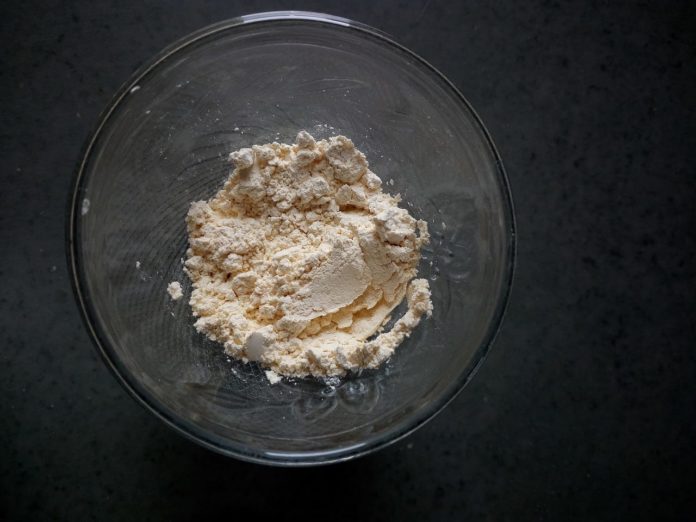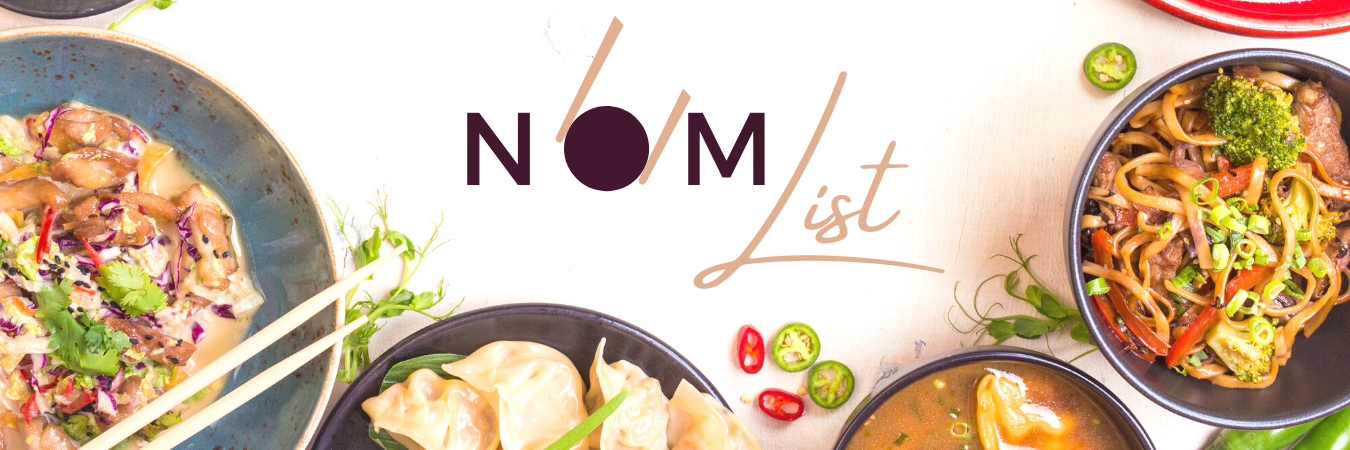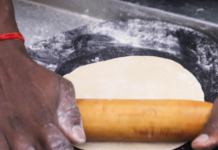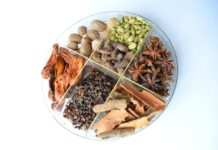
What is Atta?
A roti needs to be flat, soft and tasty. It also needs to be strong enough to pick up and wrap up different curries and meals. Making the perfect roti needs skill and practice, but most importantly it needs the right atta.
Atta is a whole wheat flour that is made from durum wheat. Is the perfect flour to use when making roti, as well as other doughs like chappati, paratha and puri. It is ground in stone mills called chakki and has an authentic taste and texture.
It is a basic in many homes, but there are so many different brands on the market that it can be difficult to choose which might be the best for you and your family. Some are organic, some are gluten free, and some contain extra ingredients. Different ingredients and textures can create slightly different rotis, so it is important to know what you are buying.
Below you will find a complete guide to the best atta for making roti. There is traditional, basic atta, and also some atta with a little bit extra. Find the atta you need to make the most delicious and soft roti in your own kitchen.
Our Picks For The Best Atta For Roti
Best Overall:
Sujata Chakki Atta
Runner Up:
Golden Temple Durum Atta
Keto Atta
NutroActive Keto Atta

Understanding Atta and Roti
Roti Versus Chapati
Although roti and chapati are often used interchangeably, they have slight differences. Roti is a generic term used for various types of Indian bread, whereas chapati specifically refers to bread made from whole wheat flour, also known as atta. Both share a similar cultural background and preparation process but can differ in their cooking techniques1.
Key Components of Atta Flour
Atta is whole wheat flour used primarily in Indian, Pakistani, and Bangladeshi cuisines. Two crucial aspects of atta flour are its protein content and gluten strength:
- Protein content: Atta flour usually has a high protein content, which is essential for the elasticity and extensibility of the dough. Protein content can vary among different brands and types of atta flour2.
- Gluten strength: The gluten strength in atta flour significantly impacts the texture and softness of the roti. Stronger gluten results in softer, fluffier rotis, while weaker gluten produces denser, chewier bread2.
Selecting the best atta for making roti involves considering these components alongside personal preferences and the specific brand’s quality.
Factors Affecting Atta Quality
Wheat Variety
The quality of atta for making roti depends on the variety of wheat used. Different wheat varieties have varying levels of protein, fiber, and micronutrients, which play a crucial role in the final taste and texture of the roti. Whole wheat flour is often preferred for its higher nutritional value and distinct nutty flavor. The choice of wheat variety can also depend on regional preferences and availability.
Grinding Process
The grinding process has a significant impact on atta quality. Traditional stone mills, or chakkis, are known for producing atta with a coarse texture and a rich, earthy aroma. Stone grinding retains the natural nutrients and fibers of the wheat, resulting in atta with a wholesome, rustic character.
Meanwhile, modern roller mills produce a finer, more uniform flour that is favored for its ease of use and consistent results. Both grinding methods have their advantages, but the choice ultimately depends on personal preference and intended use in the kitchen.
Gluten Content
Gluten content is another essential factor influencing atta quality. A higher gluten content, typically found in hard wheat varieties, is necessary for roti to puff up properly during the cooking process. Gluten content in hard flour ranges from 12 to 14 percent1. A well-balanced gluten content ensures that the roti is soft, yet elastic enough to hold its shape while rolling and cooking.
Using atta specifically designed for making roti, such as chapati flour, is a reliable option for achieving the desired gluten content and consistency2. However, experimenting with different wheat flours and gluten ratios can help in creating unique textures and flavors to suit individual tastes.
Top Atta Brands for Roti
Sujata

Sujata is a well-known atta brand that offers high-quality flour suitable for making roti. Known for its exceptional quality and taste, Sujata flour is produced from carefully sourced wheat, ensuring that the traditional flavor and nutritive value of the wheat are maintained.
Golden Temple

Golden Temple is another popular atta brand that offers quality flour suitable for roti making. The brand offers a variety of atta options, including whole wheat and durum wheat flours. The Golden Temple Durum Atta Flour is highly regarded for its aroma, taste, and ease in making delicious rotis.
Laxmi Sharbati Chappati Flour
Laxmi Sharbati Chappati Flour is a premium-quality flour made from Sharbati wheat, which is renowned for its rich taste and soft texture. This unique flour variety provides soft, fluffy, and delicious rotis that are perfect accompaniments to curry, dhal, or other Indian dishes. Laxmi atta is a popular choice for those who want to try authentic Sharbati flour for their roti-making process.
King Arthur
King Arthur is a leading supplier of flour in the USA, and its atta flour is highly sought after in the roti-making community. The King Arthur Premium Atta is perfect for those who want a high-quality option for making delicious rotis. The brand’s attention to detail in selecting the wheat and processing ensures that the rotis come out soft, tender, and with excellent taste.
Alternative Flours for Roti
White Whole Wheat Flour
White whole wheat flour can be a suitable option for making roti if you cannot find atta chakka. To make a supple dough with white whole wheat flour, mix 1 cup of white whole wheat flour with 1 cup of bread flour in a mixing bowl. You can add more white whole wheat flour if needed to achieve the desired consistency for your roti dough<sup>1</sup>.
Durum Wheat Flour
Durum wheat flour is another alternative you can consider for making roti. Durum wheat is a high-protein variety of wheat that is often used in pasta making. While it may not provide the same texture and taste as traditional roti made with atta chakka, durum wheat flour can still be an interesting alternative to try.
Gluten-Free Options
There are also gluten-free flour options you can use for making roti, such as sorghum and millet. Sorghum, also known as jowar, is a popular gluten-free choice for making roti in India.
Sorghum (Jowar)
Sorghum is a nutritious and gluten-free flour option that can help you make roti without using traditional wheat flour. Sorghum roti, also known as jowar roti, is commonly made in India and provides a healthy, gluten-free option for those who prefer or require it<sup>5</sup>.
Millet (Bajra)
Millet, also known as bajra, is another gluten-free alternative to wheat flour for making roti. Bajra is a good source of magnesium, zinc, iron, and calcium, making it especially healthy during winters<sup>7</sup>. You can mix bajra with other flours if you find the texture too coarse or the taste too bland.
In conclusion, there is a variety of alternative flours available for making roti, ranging from white whole wheat flour and durum wheat flour to gluten-free options like sorghum and millet. While these alternatives may not provide the exact texture and taste of roti made with atta chakka, they can still be useful for those who need or prefer alternatives in their cooking.
Roti Recipe and Tips
Ingredients and Ratios
To prepare soft rotis, start with the right ingredients and ratios. Use atta flour, which is made from whole wheat and specifically used for making rotis, resulting in a healthier option compared to all-purpose flour. The basic ingredients for rotis are:
- 2 1/2 cups atta flour
- 1 teaspoon ghee (optional, for added softness and taste)
- 1/2 teaspoon salt
- 1 1/4 cups water (room temperature or warm)
In addition, you may need some extra atta flour for dusting and some oil or ghee for cooking the flatbreads.
Kneading the Dough
Kneading the dough is an essential step in making soft rotis. Start by mixing the atta flour, salt, and optional ghee in a large bowl. Gradually add water to the mixture while mixing it with your hands to form a dough. As you add water, be careful not to pour it all at once, as the dough might become too soft or sticky. Kneading should take around 5 minutes to achieve the perfect consistency – a smooth dough that is neither too dry nor too sticky.
Using warm water for kneading the dough can also help achieve softer rotis. Moreover, adding 1 teaspoon of oil or ghee to the dough while kneading can keep the rotis soft for a longer time.
Rolling and Cooking
Once the dough is ready, divide it into small, equal-sized balls. Prepare a clean, flat surface for rolling the dough, and dust it with some dry atta flour to prevent sticking. Use a rolling pin to roll out each dough ball into a circle, applying even pressure to achieve a consistent thickness.
Preheat a pan (preferably a tava or a flat non-stick pan) over medium heat. When the pan is hot, place the rolled roti on it and cook for 30 seconds to a minute on each side. As it cooks, the roti should puff up, indicating it’s cooked evenly. Optionally, you can spread a little ghee or oil on the roti during cooking for added taste and softness.
Serve the rotis hot, preferably as an accompaniment to curries, wraps, or any other dishes that complement their nutritious and versatile nature. Remember to keep practicing the recipe and implementing these tips and tricks to achieve perfectly soft rotis, suitable for both vegan and non-vegan meals.
Serving Suggestions and Pairings
Roti, a popular Indian bread, is a versatile accompaniment that pairs well with a variety of dishes. In this section, we explore some serving suggestions and pairings for roti.
Firstly, roti can be served with different types of curry. Whether it’s a delicious vegetable curry or a flavorful meat-based curry, roti complements these dishes perfectly by helping to balance the spices and flavors. Some popular curry options to serve with roti include:
- Panchmel Dal: A blend of five types of lentils cooked together and seasoned with spices.
- Kala Chana Masala: A protein-rich chickpea curry with a tangy tomato-based sauce.
- Rajma Masala: A comforting kidney bean curry cooked in a tomato and onion gravy.
Stews are another great option to pair with roti. These hearty dishes can easily be scooped up and enjoyed with the soft texture of the bread. Some stews that go well with roti are:
- Saag: A green, smooth spinach-based dish commonly paired with paneer or chicken.
- Aloo Gobi: A comforting stew made with potatoes and cauliflower simmered in a rich tomato sauce.
A belan, a traditional Indian rolling pin, is often used to roll out the dough for roti. When making roti at home, using a belan ensures a consistent thickness for optimal cooking results. To properly roll the roti using a belan, divide the dough into equal pieces and, on a lightly floured surface, roll each piece into a disk with a diameter of about 6 inches.
As a versatile bread, roti can also be used to make sandwiches or wraps. For instance, a rito, a fusion of roti and burrito, uses roti as the wrap for various fillings, such as spiced vegetables, grilled meat, or bean-based dishes. With its soft texture and ability to absorb flavors, roti makes for an excellent alternative to traditional tortillas or wraps in fusion cuisine.
In summary, roti is a delicious accompaniment that pairs well with various dishes such as curries, stews, and even as a base for fusion cuisine like ritos. Consider trying these different serving suggestions and pairings to enjoy the versatility of roti in your meals.
What To Look For When Buying Atta
Atta is a basic in every Indian kitchen. It is a finely milled whole wheat flour made from the entire wheat berry. It is traditionally used to make rotis and other dough goods in Indian cooking. But what makes a good atta, and what should you look for when buying one?
Gluten content – Atta is made using hard wheats, which gives it a high gluten content. This helps the dough have elasticity and be strong, allowing it to be rolled into thin sheets. However, there are some attas that are gluten free which should still work the same.
Grounding process – Traditionally atta was ground in a stone chakki mill. It is usually still done so now, but on an industrial scale. This damages the starch in the atta, which allows the dough to become sticky. This stickiness helps the rotis become softer, as the dough absorbs more water.
Organic – Many people prefer to buy certified organic ingredients for cooking. Luckily, there are some great attas that are certified organic. There are certified organic farms in India that provide the wheat for the atta, so it is still authentic to its home county.
100% Whole Wheat – It is important to use atta that is 100% whole wheat. Make sure there is no added maida in the flour. The whole wheat forms part of your daily requirements and also keeps the nutritional content healthy.
How to Make Roti
Now that you have chosen your good quality atta, you need a fail-proof roti recipe to get you started.
Roti is a handmade bread that is flat and usually served with a curry of sort, be it meat curry or beans curry. It should be soft yet flaky, easy to peel and eat with.
Ingredients
- 400g atta flour
- 1 tbs melted butter or ghee
- Pinch of salt
- 2 tbs vegetable oil
- 250ml hot water
1. Add 350g of the atta into a bowl, along with the oil and the hot water. Mix with a spoon.
2. Dust the worktop with some atta. Remove the dough from the bowl and place it on the prepared worktop.
3. If the dough is too sticky, add some flour. If it is too dry, add some water. Knead the dough until it is soft and pliable. This could end up taking up to 5 minutes, but it is important to knead it until it has the right consistency.
4. Place the dough back in the bowl and cover with a dishcloth. Leave it to rest for up to 10 minutes.
5. Break a small piece of the dough and use a rolling pin to roll it out into a large circle. Spread the melted butter or ghee over the top of the dough.
6. Roll the doll into a long roll and cut into even pieces. Press down on each piece and roll into a flat, circular shape. It is important to get the dough as thin as possible.
7. Cook the roti in a preheated pan and let cook for around 1 minute. When flipped over, press down lightly to ensure the roti cooks evenly. When the roti rises and bubbles form with brown spots, it is ready to be taken off the heat.
Your ready to eat roti should be able to be peeled in a few layers and should be light and soft to eat. Perfecting a roti isn’t too difficult with a little bit of practice and the right ingredients and tools!
The Best Atta for Making Roti
Now you have everything you need; the right atta, the roti recipe and the excitement to eat all the rotis and curries, you are ready to go.
The right atta will help you achieve the perfect roti time and time again, exactly the roti you remember having growing up. It is easy to make and is a bread that can be enjoyed with so many different meals!
Try out different atta to see which is best for you and your family, you will soon find the one that will help you be a great home cook!




